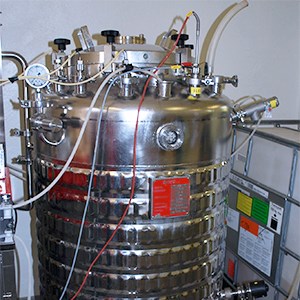Contact
sebastian.hakansson@slu.se, 018-673204, 0761313536

In this project, we study how well different kinds of yeast can be cultivated on acetic acid with the highest possible yields of carbon, nitrogen, phosphorous and other nutrients.
We investigate how digestate composition and cultivation conditions can maximize the yields of carbon, nitrogen and phosphorous incorporation into yeast biomass. The amount and composition of residual carbon, nitrogen and phosphorous not assimilated by the yeasts will be analyzed and the upstream process (anaerobic acetogenesis) will be adjusted to maximize the yields of carbon, nitrogen and phosphorous.
We are also investigate residual compounds in the digestate that can inhibit yeast growth e.g. the terpene limonene from citrus waste. Since acetate itself is inhibitory to yeast growth at high concentrations and low pH (where the un-dissociated form predominates), cultivation conditions must be optimized to allow efficient cultivation. Since the digestate can be fairly high in acetate, it can be used for both fed-batch and continuous cultivation schemes under carbon limitation, which would circumvent the problem of toxic acetate concentrations.
We are focusing on well-established feed yeasts such as Candida utilis, Kluyveromyces marxianus, Phaffia rhodozyma, Pichia pastoris, Saccharomyces cerevisiae and Yarrowia lipolytica.
sebastian.hakansson@slu.se, 018-673204, 0761313536